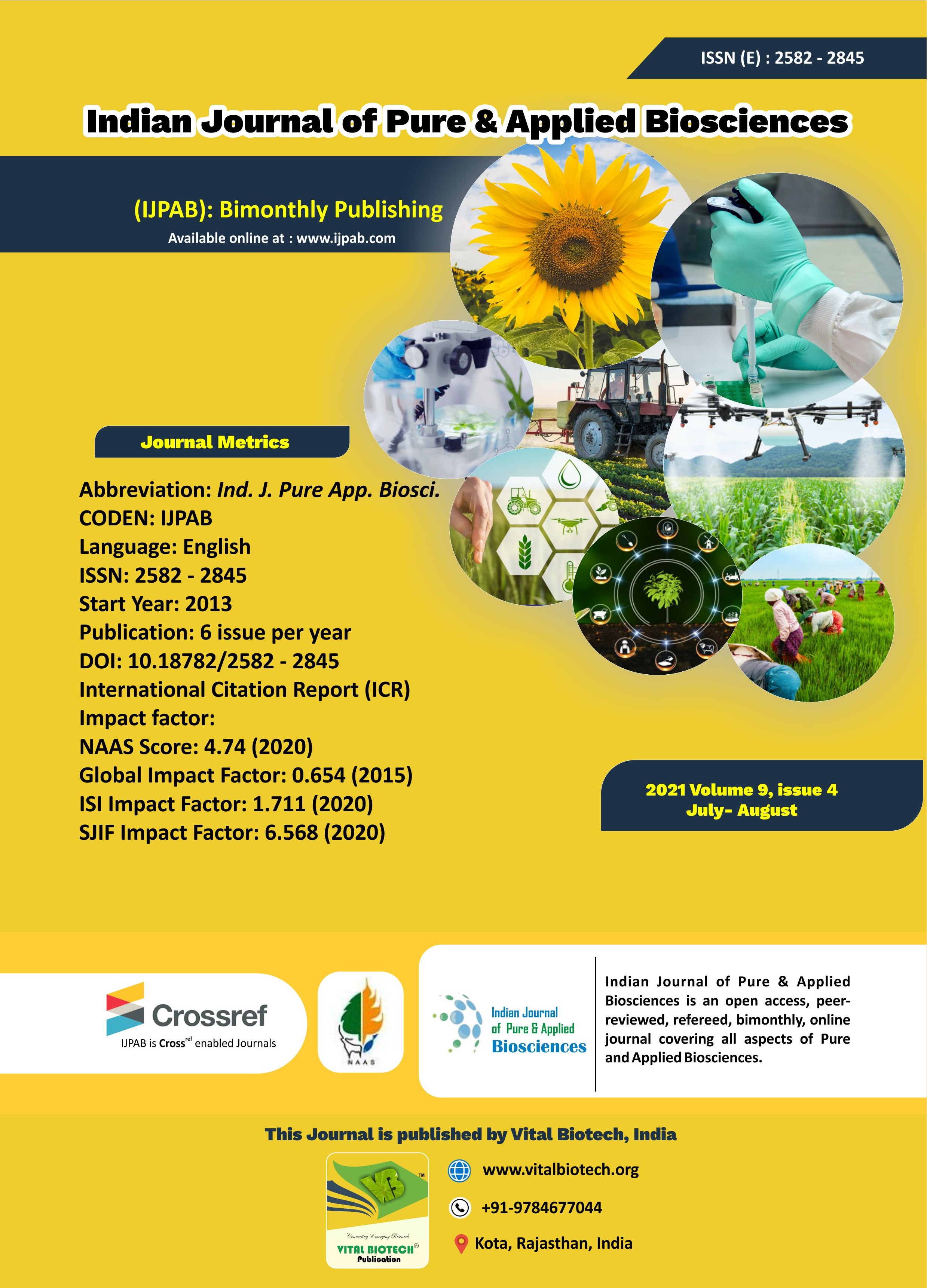-
No. 772, Basant Vihar, Kota
Rajasthan-324009 India
-
Call Us On
+91 9784677044
-
Mail Us @
editor@ijpab.com
Indian Journal of Pure & Applied Biosciences (IJPAB)
Year : 2021, Volume : 9, Issue : 4
First page : (1) Last page : (7)
Article doi: : http://dx.doi.org/10.18782/2582-2845.8750
Waterlogging In Cotton: Stress, Consequences, Adaptability, Mechanisms and Measures for Mitigation of Yield Losses
Urooj Fatima Chaudhry, Muhammad Qasim Ali and Muhammad Nouman Khalid*
Department of Plant Breeding and Genetics, University of Agriculture Faisalabad, Pakistan
*Corresponding Author E-mail: noumankhalidpbg@gmail.com
Received: 21.06.2021 | Revised: 28.07.2021 | Accepted: 8.08.2021
ABSTRACT
From many years, global cotton production suffers from waterlogging stress. Climatic variation and heavy rainfall conditions with poor internal soil drainage mechanism limits the growth and development of cotton crop due to waterlogging. It reduced the soil oxygen which causes the severe yield losses and sometimes even failure of a crop. Indeterminate growth habit of cotton plant makes it able to adapt this stress by activation of the escape, self compensation and quiescence mechanism. The reduction of biomass, development of adventitious roots and accelerated growth mechanism, all are associated with adaption and tolerance mechanisms. Waterlogging significantly affect the cellulose and sucrose content of fiber in cotton. Sodic soils also exacerbate the waterlogging stress because these soils already suffer by aeration stress. Different growth stages are effect differently but flowering and boll setting stage is more sensitive to waterlogging conditions.
Keywords: Cotton, Crop, Fiber, Biomass
Full Text : PDF; Journal doi : http://dx.doi.org/10.18782
Cite this article: Chaudhry, U. F., Ali, M. Q., & Khalid, M. N. (2021). Waterlogging in cotton: stress, consequences, adaptability, mechanisms and measures for mitigation of yield losses, Ind. J. Pure App. Biosci. 9(4), 1-7. doi: http://dx.doi.org/10.18782/2582-2845.8750


